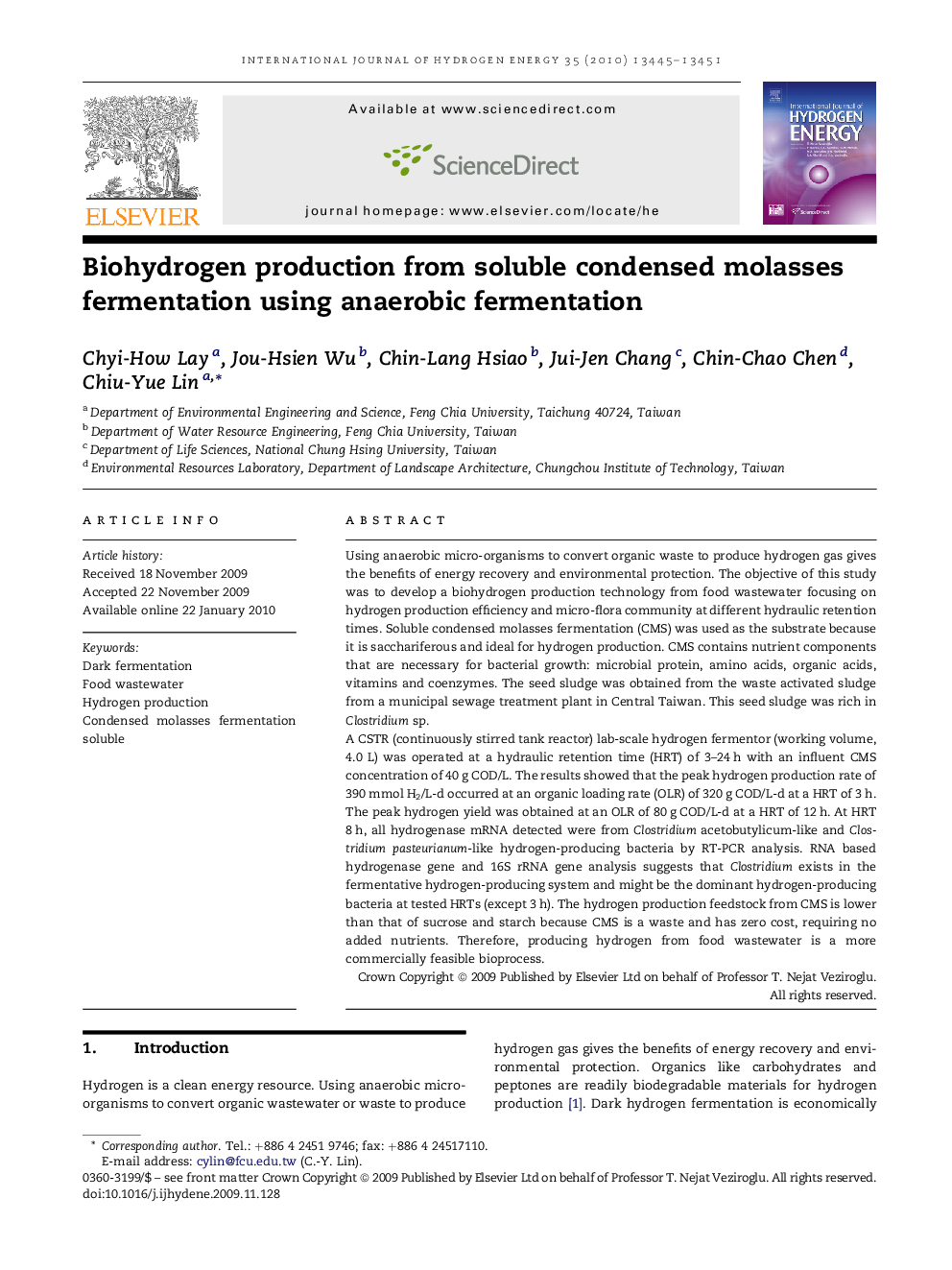| Article ID | Journal | Published Year | Pages | File Type |
|---|---|---|---|---|
| 1282711 | International Journal of Hydrogen Energy | 2010 | 7 Pages |
Using anaerobic micro-organisms to convert organic waste to produce hydrogen gas gives the benefits of energy recovery and environmental protection. The objective of this study was to develop a biohydrogen production technology from food wastewater focusing on hydrogen production efficiency and micro-flora community at different hydraulic retention times. Soluble condensed molasses fermentation (CMS) was used as the substrate because it is sacchariferous and ideal for hydrogen production. CMS contains nutrient components that are necessary for bacterial growth: microbial protein, amino acids, organic acids, vitamins and coenzymes. The seed sludge was obtained from the waste activated sludge from a municipal sewage treatment plant in Central Taiwan. This seed sludge was rich in Clostridium sp.A CSTR (continuously stirred tank reactor) lab-scale hydrogen fermentor (working volume, 4.0 L) was operated at a hydraulic retention time (HRT) of 3–24 h with an influent CMS concentration of 40 g COD/L. The results showed that the peak hydrogen production rate of 390 mmol H2/L-d occurred at an organic loading rate (OLR) of 320 g COD/L-d at a HRT of 3 h. The peak hydrogen yield was obtained at an OLR of 80 g COD/L-d at a HRT of 12 h. At HRT 8 h, all hydrogenase mRNA detected were from Clostridium acetobutylicum-like and Clostridium pasteurianum-like hydrogen-producing bacteria by RT-PCR analysis. RNA based hydrogenase gene and 16S rRNA gene analysis suggests that Clostridium exists in the fermentative hydrogen-producing system and might be the dominant hydrogen-producing bacteria at tested HRTs (except 3 h). The hydrogen production feedstock from CMS is lower than that of sucrose and starch because CMS is a waste and has zero cost, requiring no added nutrients. Therefore, producing hydrogen from food wastewater is a more commercially feasible bioprocess.
